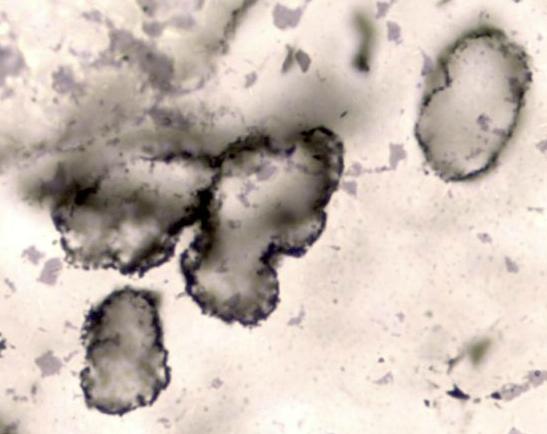Science News
Oldest Microfossils of Life?

If you thought the debate over human ancestors’ fossils challenged our thinking about the distant past… What about the debate over the first ever fossils of life on Earth?
A new paper, published yesterday in the journal Nature Geoscience, makes a claim for oldest fossils ever discovered. Found in the hot bed for these sorts of things, Western Australia, the microscopic fossils show convincing evidence for cells and bacteria living in an oxygen-free world over 3.4 billion years ago.
The ancient fossils show up in some of Earth’s most primitive sedimentary rocks, well preserved between the quartz sand grains of the oldest beach or shoreline known on Earth.
“We can be very sure about the age as the rocks were formed between two volcanic successions that narrow the possible age down to a few tens of millions of years,” says co-author Martin Brasier of Oxford University. “At last we have good solid evidence for life over 3.4 billion years ago. It confirms there were bacteria at this time, living without oxygen.”
The fossils are very clearly preserved showing precise cell-like structures all of a similar size. They look like well-known but much newer microfossils from 2 billion years ago, and they do not appear distorted or strained in shape. In addition, the fossils suggest biological-like behavior: the cells cluster in groups, only present in appropriate habitats, and are found attached to sand grains.
In the absence of oxygen, the bacteria appear to have thrived on sulfur. From ScienceNOW:
Turning to chemistry, [lead author David] Wacey and Brasier found that the apparent cell walls contained a different isotope, or version, of carbon from the surrounding rock. They also found tiny mineral crystals containing a different version of sulfur in and around the cells—evidence that the microorganisms were processing sulfur from the environment to extract energy.
“Such bacteria are still common today. Sulfur bacteria are found in smelly ditches, soil, hot springs, hydrothermal vents—anywhere there's little free oxygen and they can live off organic matter,” explains Brasier.
So where is the debate? The New York Times reports it well.
In 1993, [J.W.] Schopf [of UCLA] reported his discovery of fossils 3.465 billion years old in the Apex chert of the Warrawoona Group in Western Australia, about 20 miles from where the new fossils have been found. Those would be some 65 million years older than the new find, but Dr. Schopf’s claim was thrown in doubt in 2002 when Dr. Brasier attacked his finding, saying the fossils were not biological but just mineral artifacts.
But Brasier and his colleagues aren’t worried about the debate. “We’re now making detailed comparisons with all other early microfossils, and we’re very optimistic for future finds,” he says.
For more on the origins of life, come visit the Academy’s Morrison Planetarium to see Life: A Cosmic Story, which features a round-the-globe tour of microfossils and other evidence for our evolving ancestors.
Image: David Wacey, University of Western Australia